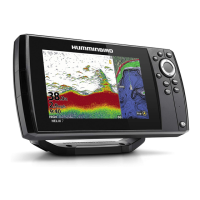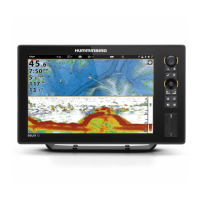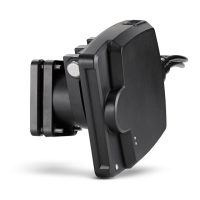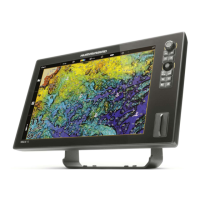198
Troubleshooting
Display Problems
T
here are several main conditions or sources of possible interference that may cause problems with the quality of the information
displayed on the control head. Look in the following table for some symptoms of display problems and possible solutions:
Finding the Cause of Noise
Electrical noise usually affects the display with many black dots at high speeds, and high sensitivity readings. See the table below
for possible sources that can cause noise or interference.
Display Problems Possible Solutions
The control head loses power at high
speeds.
I
f the power output of your boat’s engine is unregulated, the control head may be
protecting itself using its over-voltage protection feature. Make sure the input voltage
does not exceed 20 Volts.
When the boat moves at higher speeds,
the bottom disappears or suddenly
weakens, or the display contains gaps.
The transducer position may need to be adjusted. A mix of air and water flowing around
the transducer (cavitation) may be interfering with the interpretation of sonar data.
See the transducer installation guide for instructions to adjust the transducer position.
Electrical noise from the boat’s engine may be interfering with sonar reception. See
Finding the Cause of Noise for more information.
There are no fish detected, even when
you know they are in the water under the
boat, or sonar readings seem weak or
faulty.
Sonar readings may be affected if the transducer is not positioned correctly (such as
mounted at an angle, not straight down), or there is some kind of mechanical
interference, either because it is mounted inside a hull that is too thick for proper sonar
transmission, the bond between the transducer and the hull is not airtight, or because
the transducer is dirty. See the transducer installation guide to adjust the transducer
position, and make sure the transducer is clean.
Low battery voltage may be affecting the power of signal transmission.
Electrical noise from the boats engine may be interfering with sonar reception. See
Finding the Cause of Noise for more information.
Possible Source of Noise Isolation
Other electronic devices
Turn off any nearby electronic devices to see if the problem goes away, then turn them
on one at a time to see if the noise re-appears.
The boat’s engine
To determine whether the boat’s engine is the source of the noise, increase the RPMs
while the boat is in neutral and stationary to see if the noise increases proportionately.
If the noise appears when you rev the engine, the problem could be the spark plugs,
alternator, or tachometer wiring. Replace the spark plugs with resistor plugs, install an
alternator filter, or route the control head power and transducer cables away from the
engine wiring.
Cavitation from the boat’s propeller
Turbulence created by the propeller can cause noise. Confirm the transducer has been
properly installed according to its specific mounting requirements (see the transducer
installation guide for details). Also, make sure that the water flows smoothly over the
face of the transducer at all times.

